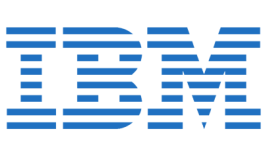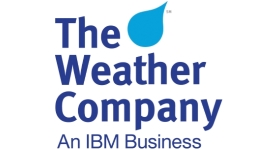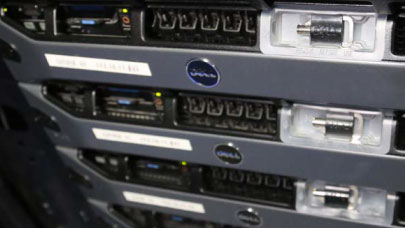How is it that a tape cartridge can affect the duration of use of a drive?
The drive head necessarily wears out over time, and the various processes of cleaning and maintenance of the head only delay the fatal deadline. During its decline, the read/write head loses its ability to isolate the particles on the tape. These particles emit signals that are to be detected by the drive head. It is the same thing as for us, poor humans: it gradually becomes deaf. The Barium Ferrite particle has a magnetic power far superior to the older coating tape technologies : basically, it shouts louder, and even though it starts to become hard of hearing, the head keeps on ”hearing” the signal emitted by Barium Ferrite particles much longer in time than the signals emitted by the MP particles usually used by Fujifilm’s competitors. When time came to develop the new LTO6 tape which was launched in 2012, Fujfilm conducted tests in order to judge whether they should continue using the old MP for which they were already worldwide No.1 manufacturers or switch to the new Barium Ferrite. The aim of the test was to calculate in the number of hours, when the drive would begin to lose its first performance percentage, after a continuous use in time – it took 3x longer for the drive using a BaFe made LTO6 tape than for the drive using MP made tapes, to reach the same performance loss of the drive.
Is Barium Ferrite this technological innovation that solves the growth of digital data as well as new regulations?
Precisely. Right now, IBM’s 3592JD offers a capacity of 10TB, 360MB/s transfer rate with a 2GB buffer. The new Oracle T10000E will be launched between late 2016 and early 2017, and there is talk of a capacity of 12TB and a new record in terms of transfer rates between 380 and 400MB/s. We have definitely entered a new era. This has caused damage to the tape family and there has been much discussion among those I call the ”ritualists” and ”innovative”. Ritualists, who ruled tape technology in the 2000s and caused its decline until 2012, said that, regardless of its performance, any tape should be designed so that the greatest number of manufacturers could make it. This idea applied to both Hardware and Tape Media. No wonder then, in this case, LTO6 offered a transfer rate of 160MB/s while the LTO5 drive, launched 2-3 years before, already offered a 140MB/s transfer rate. The launch of the LTO6 drive with a capacity of 2.5TB and 160MB/s was a huge disappointment as it lacked ambition on the one hand and secondly, did not sufficiently meet the needs of users. This is also an argument used by the pro-disk Stalinists: using the fact the tape manufacturers have abandoned the race in order to point out a possible decline of the technology as an excuse. I see things in exactly the opposite way; we have finally put an end to this downward spiral that was gradually destroying tape technology. We are, again, this small family of players, gathering manufacturers, distributors and users. This family stands in front of a strong market demand with a product that has never been as good as it is today, and more importantly, this product has never been in such a dominant position versus competition in its specifications. The ‘’Innovative’’, which, in my opinion, have regained the upper hand since 2013 have finally restored order in the house: the idea is that you produce the right product, one that meets the specifications of user. The idea is also that those who are struggling to keep pace, in terms of technical innovation, always have time to catch the escapees. The LTO7 is a tape that definitely marks the comeback of tape technology within SMEs: 6TB capacity, 300MB/s transfer rate, a write error rate of 1 x1019, intensive use of Barium Ferrite, extremely attractive drive prices: it is impossible to create a better storage product than LTO7 for a company of 50 employees.
Who are the manufacturers that make up this escape?
Today, when we look at research and development, as well as the industrial aspect, it is clear that two manufacturers carry the tape technology: IBM and Oracle.
IBM and Oracle are, at the same time, those who developed the existing Enterprise tape technologies (3592 and T10000)?
I think we should look at the matter from the other way. When talking about tape, we talk, by nature, about Enterprise tapes – IBM 3592 and Oracle T10000. These two technologies are the absolute standard of excellence in terms of data storage ie. the Alpha storage pair. These are the technologies that provide the best performance, highest storage capacities, and whose industrial development is the most demanding. Now, if you take an Enterprise tape, remove a few applications from it, decrease its speed, its reliability, you still get a great tape but one that is way below the quality of an Enterprise tape ; we call this the LTO tape technology. LTO tape is excellent, yet it represents the entry-level of tape technology, a technology whose high end is inhabited by 3592 and T10000.
You are talking about lower speed and reliability, but LTO is still cheaper than 3592 or T10000…
It is not that obvious. The acquisition cost comes with price differences between LTO and Enterprise that can vary from 15% to 30%, but this price difference reverses once you start using the storage solution. When it comes to users who hold less than 3-4PB, LTO7 seems the most advisable option, although we have seen examples of users who need speed at all costs. Now the one who needs speed, obviously needs 3592 or T10000. In contrast, when we address users that store more than 5PB worth of data, Enterprise tapes are more advantageous. Just take the case of floor space: we speak with users who have more than 60,000 tapes in stock and pay a monthly cost of between 20 000 and 30 000 Eu to rent storage space. On the other side, we know that an Oracle T10000 tape will contain, from next year, the equivalent of 15 LTO4 cartridges. That means you will be able to convert 30,000 LTO4 tapes into 2000 T10000 tapes. The difference in the purchase cost of the equipment is sometimes absorbed in under a year. To this, we must add other cost factors that can often harshly impact the calculation of the actual cost of use of the tape solution: the accuracy of the cost should take data security into account (better data integrity for Enterprise, longer preservation of data over time, longer intensive use of the drive). We must also consider another factor, the effectiveness, that is to say, the result obtained in relation to the investment made (much faster writing speed, faster access to data, faster and more reliable verification of the data integrity etc…): all these small differences that considerably increase the performance of your company. Anyway, the customer is king and must choose what is best for his company, but, for me, there is no contest between LTO and T10000 once one exceeds 5PB of data stored or to be stored.
Let’s get to the critics of tape technology. What are the main weaknesses or criticisms against tape?
These are two different subjects. The weaknesses do not always correspond to the criticism and vice versa. The main weakness is us, the people who formed the tape family. As for the criticisms, there are two that are recurring: the physical manipulation of the cartridge and the fact that no one was capable of helping when the user had a question or a problem. The second problem is more serious in my view: tape has enormously suffered from the complacency of those who were supposed to help, mentor or support the users.
© HPC Today 2024 - All rights reserved.
Thank you for reading HPC Today.






























